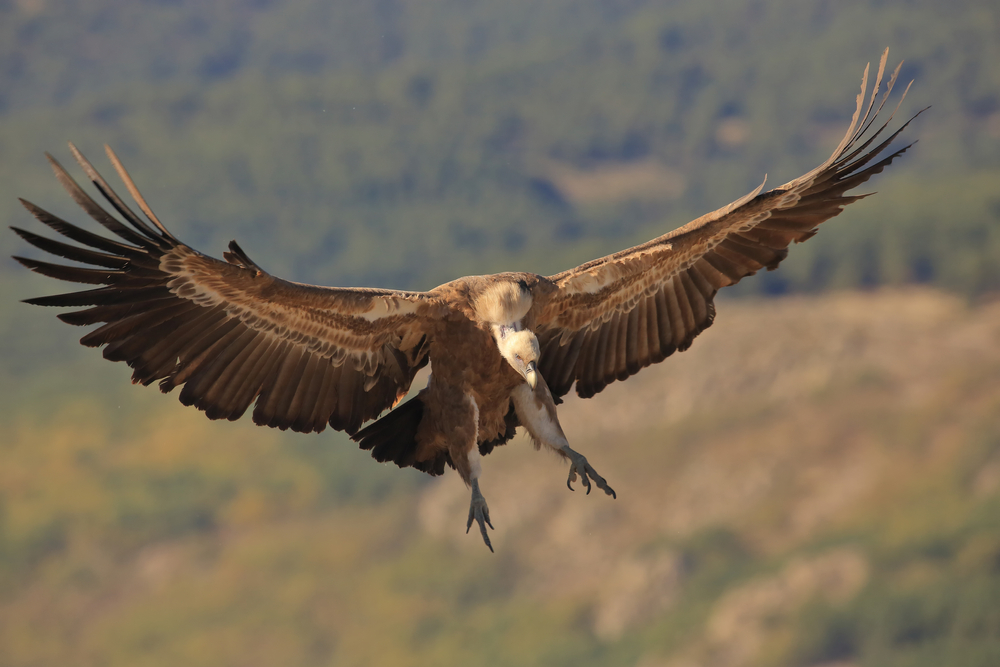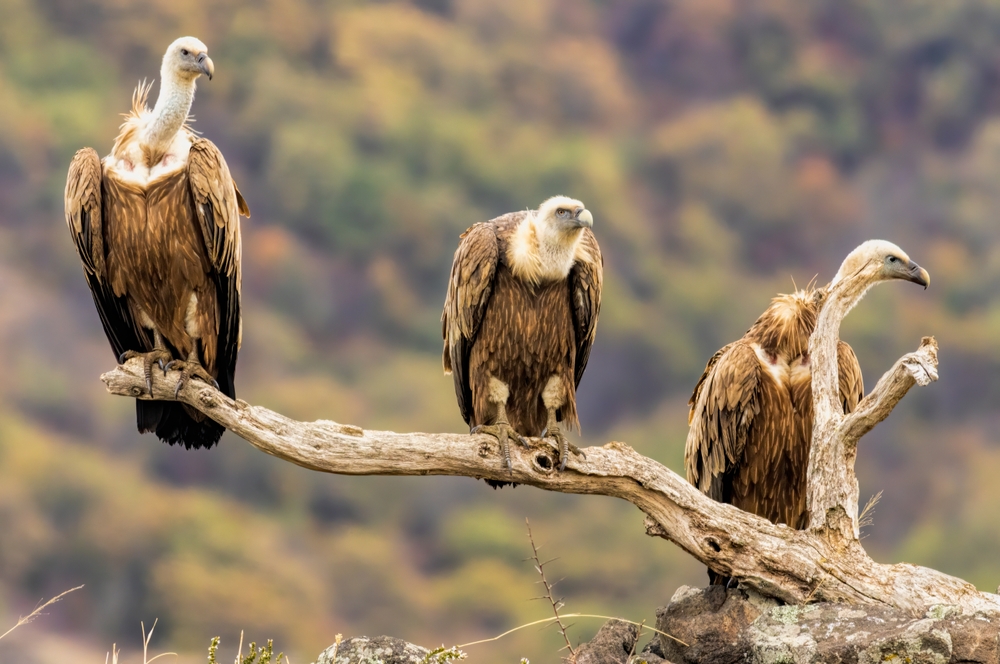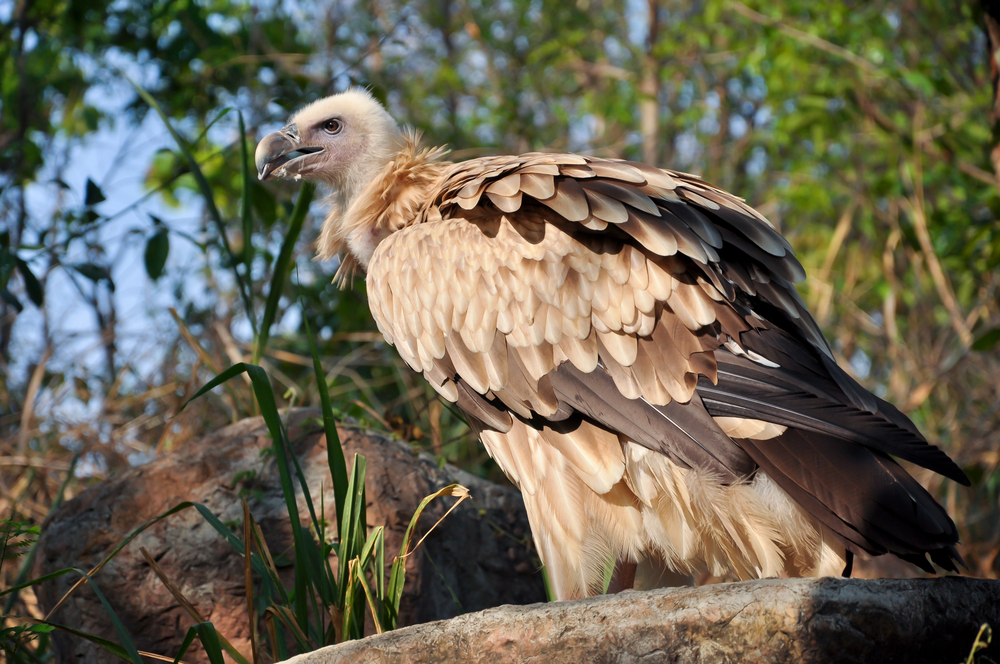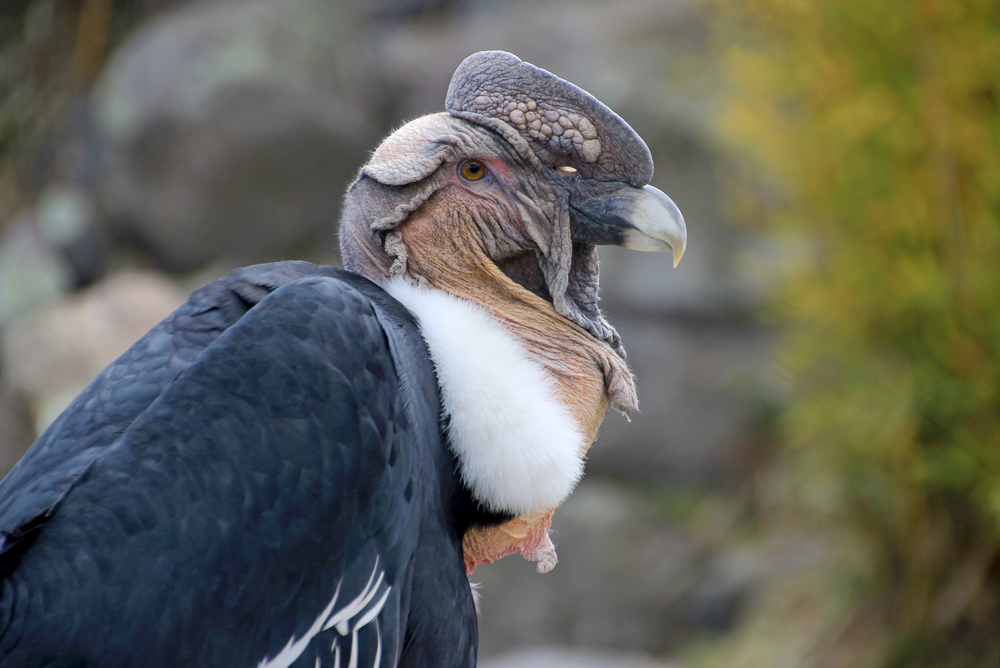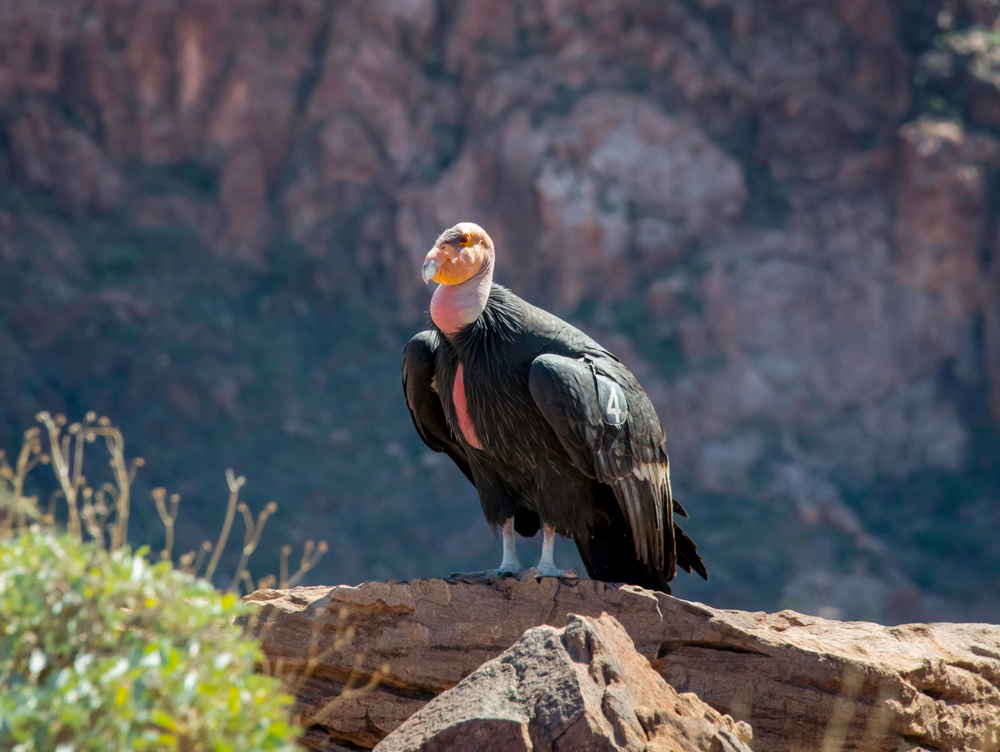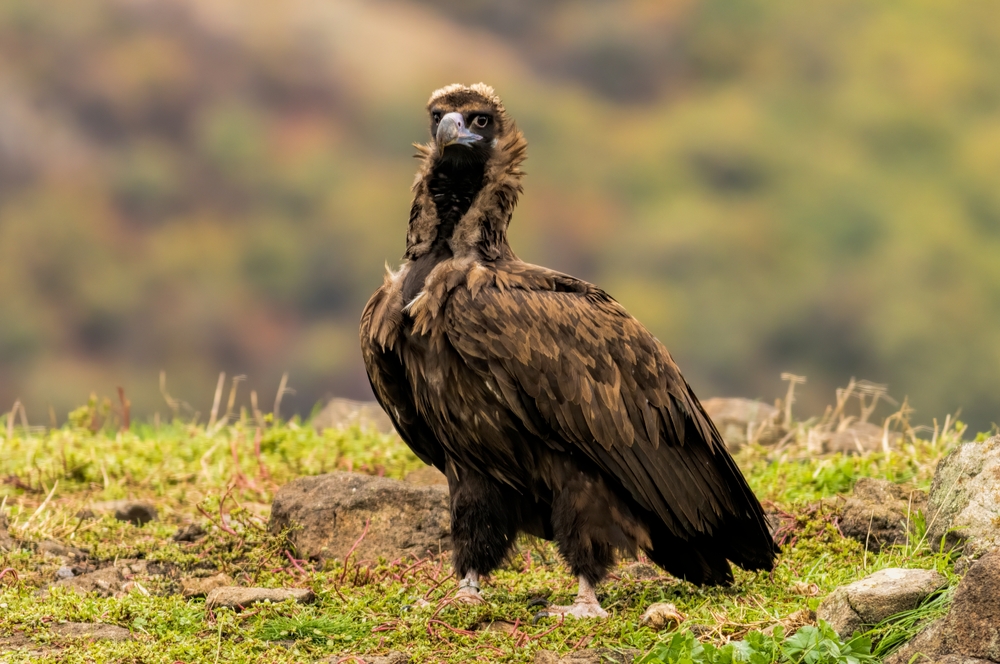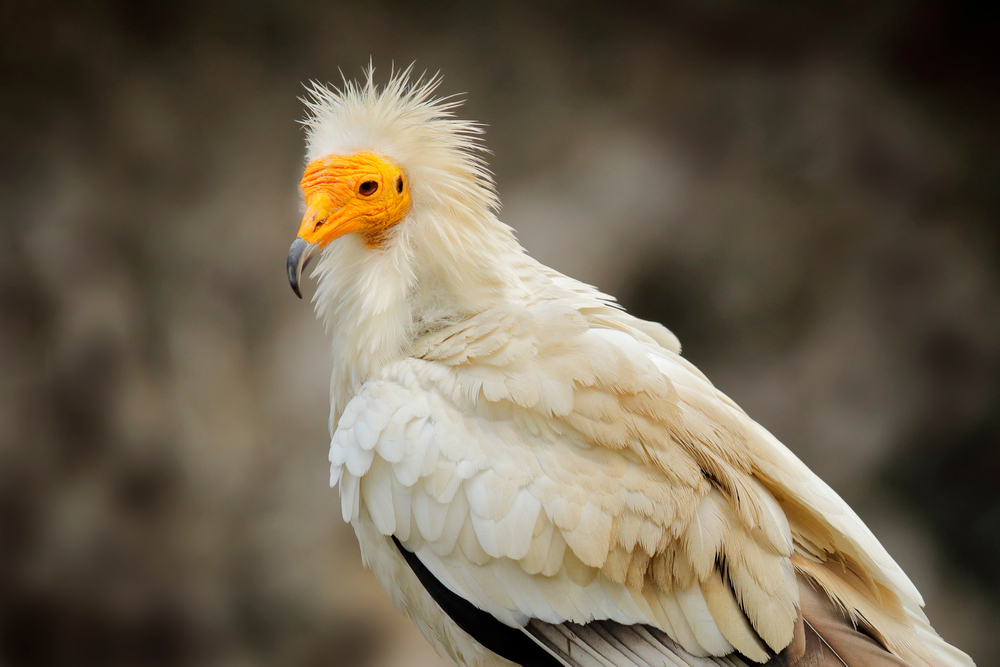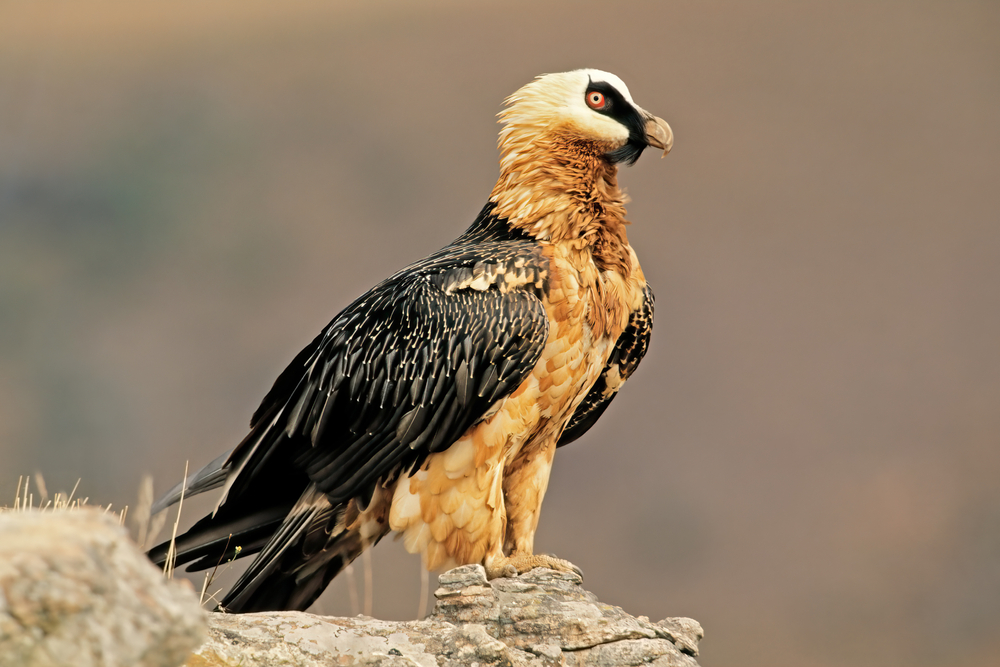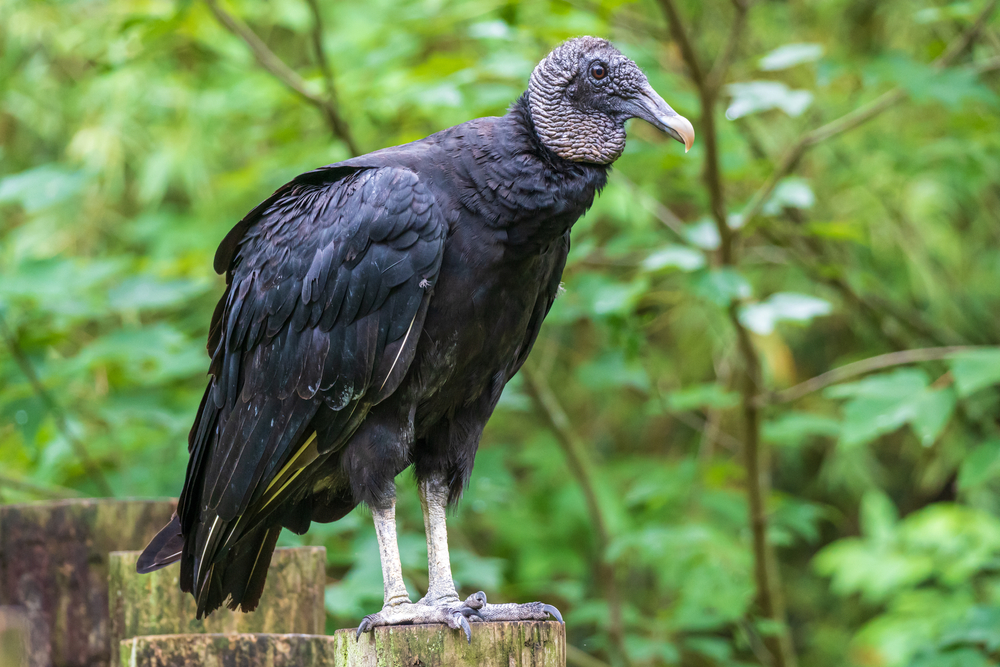Griffon Vultures are found across southern Europe, North Africa, the Middle East, and Central Asia. They prefer open mountains, cliffs, and gorges for nesting, with easy access to grasslands or savannas where carrion is available.
About
The Griffon Vulture (Gyps fulvus), part of the Accipitridae family, is one of the most widespread and recognizable Old World vultures. Found across southern Europe, North Africa, and parts of Asia, this large scavenger thrives in mountainous and open landscapes where rising thermals allow it to soar effortlessly for hours in search of carrion.
The Griffon Vulture is an impressive bird, with a wingspan ranging from 2.4–2.8 meters (7.9–9.2 ft) and weighing 6–11 kg (13–24 lbs). Its plumage is pale brown to buff with darker flight feathers, while the head and neck are covered in white down, surrounded by a ruff of pale feathers. Its long, broad wings and short tail are perfectly adapted for gliding on thermal currents, allowing the bird to travel vast distances with minimal effort.
As an obligate scavenger, the Griffon Vulture feeds almost exclusively on carrion, particularly the remains of ungulates such as sheep, goats, deer, and cattle. With its long neck and powerful bill, it can reach deep into carcasses, playing a vital ecological role in recycling nutrients and preventing the spread of disease.
Breeding colonies are typically found on high cliffs, where hundreds of pairs may nest together. Each pair usually lays a single egg, which is incubated by both parents for nearly two months. The chick fledges at about four months but remains dependent on its parents for several weeks longer.
Although once in decline due to poisoning, persecution, and food scarcity, conservation measures such as reintroduction programs and supplementary feeding stations (“vulture restaurants”) have led to population recovery in parts of Europe, particularly Spain and France. Today, the Griffon Vulture stands as both a conservation success story and a keystone species in its ecosystems.
Physical Characteristics
The Griffon Vulture (Gyps fulvus) is a large Old World vulture, widespread across Europe, North Africa, and Asia, known for its pale plumage and soaring ability.
Plumage:
-
Adults: Pale buff to cream body with contrasting dark brown flight feathers and tail. A whitish ruff of feathers encircles the base of the neck.
-
Juveniles: Darker brown overall, lacking the striking contrast of adults. Plumage lightens with age, becoming more buff-colored.
Head and Face:
The head and neck are bare, covered in white down. The skin is bluish-gray, and the long slender neck allows deep access into carcasses. The bill is ivory-colored, long, and hooked, adapted for tearing flesh.
Body and Wings:
The body is bulky, with extremely broad wings designed for soaring. In flight, Griffon Vultures appear pale with dark wing edges and fingered primaries.
Tail:
The tail is short and squared, aiding in steady gliding and maneuverability.
Size:
-
Length: 37–43 in (95–110 cm)
-
Wingspan: 7.5–9.2 ft (2.3–2.8 m)
-
Height at Rest: About 3.2 ft (1 m) when standing
Weight:
-
Adults: 15–25 lbs (6.8–11.3 kg)
The Griffon Vulture’s pale plumage, whitish neck ruff, broad wings, and bare head make it one of the most recognizable vultures of Europe and Asia. Its impressive soaring ability allows it to travel vast distances in search of carrion.
Reproduction
The Griffon Vulture (Gyps fulvus) has a reproductive cycle similar to other large Old World vultures, producing a single chick per year with strong parental investment.
1. Mating and Courtship:
Monogamous pairs form long-term bonds. Courtship includes synchronized circling flights, mutual preening, and bill-touching displays at nesting cliffs.
2. Nesting Sites:
They nest in colonies on high cliffs, crags, or rocky escarpments, often in large groups numbering in the dozens or hundreds. Nests are made of sticks and lined with wool, grass, or hair.
3. Egg Laying:
The female lays a single egg per clutch, usually between January and March in Europe and Asia. Eggs are white with occasional pale speckling.
4. Incubation:
Incubation lasts about 50–58 days, with both parents sharing duties equally.
5. Hatching and Care of Chicks:
Chicks hatch covered in white down and are altricial. Both parents regurgitate food to feed the chick, often traveling long distances to collect carrion.
6. Fledging and Independence:
Young fledge at about 110–130 days old, but remain dependent on parents for several more months before becoming fully independent.
7. Breeding Frequency:
Pairs breed once per year, though if a nest fails, they will not attempt a replacement clutch until the next season.
The Griffon Vulture’s colonial nesting, high cliff dependence, and long chick-rearing period make conservation of breeding cliffs and food availability crucial for sustaining populations.
Lifespan
The Griffon Vulture (Gyps fulvus) is a long-lived bird, with survival closely linked to its colonial lifestyle and dependence on stable food sources.
Lifespan in the Wild:
In the wild, Griffon Vultures typically live 25–30 years, though some individuals have been recorded reaching 35–40 years under favorable conditions. Juvenile survival rates are lower, with many not reaching maturity.
Lifespan in Captivity:
With reliable food, veterinary care, and protection from threats, Griffon Vultures can live up to 40–45 years, longer than in the wild.
Threats to the Griffon Vulture:
-
Poisoning: Ingestion of poisoned carcasses, pesticides, or lead fragments from hunting ammunition is the leading cause of mortality.
-
Collisions: Power lines and wind turbines are increasing threats in their range.
-
Food Shortages: Declines in traditional livestock farming reduce carrion availability.
-
Human Disturbance: Nesting colonies are sensitive to disturbance from tourism, climbing, and construction.
-
Persecution: In the past, they were hunted due to misconceptions about livestock predation.
Despite these threats, Griffon Vultures are more resilient than some vulture species due to their colonial nesting habits and wide range, but population stability still depends heavily on conservation measures and food security.
Eating Habits
The Griffon Vulture (Gyps fulvus) is a specialized scavenger, relying on carrion as its sole food source. Its size and colonial behavior make it one of the most efficient carcass consumers in Europe and Asia.
Diet:
-
Large Mammal Carrion: Primarily feeds on carcasses of domestic livestock such as sheep, goats, and cattle, as well as wild ungulates like deer and ibex.
-
Occasional Smaller Animals: Will feed on smaller carcasses (hares, birds), but prefers large bodies that support many vultures at once.
-
Bones & Tendons: Consumes softer bones, skin, and connective tissue, though less specialized in bone-feeding than the Bearded Vulture.
Hunting Strategy:
-
Soaring Search: Uses keen eyesight to locate carcasses while soaring high on thermals.
-
Social Feeding: Arrives at carcass sites in large numbers, with many individuals feeding simultaneously.
-
Reliance on Others: Sometimes relies on other scavengers, such as dogs or larger vultures, to initially open carcasses.
Feeding Behavior:
-
Highly social at feeding sites, with dominance hierarchies determining which individuals feed first.
-
Able to gorge on several pounds of meat at a time, then fast for days.
-
Bare head and neck allow it to feed deep inside carcasses without fouling feathers.
Success and Adaptability:
Griffon Vultures are highly successful scavengers thanks to their colonial lifestyle, efficient soaring, and ability to rapidly strip large carcasses. Their survival, however, depends on the continued availability of livestock carrion and wild ungulates.
Uniqueness
The Griffon Vulture (Gyps fulvus) stands out as one of the most iconic Old World vultures due to its massive size, colonial lifestyle, and ecological importance.
-
Colonial Scavenger: Unlike many solitary scavengers, Griffon Vultures live and feed in large colonies, sometimes with hundreds of individuals nesting and feeding together.
-
Soaring Efficiency: They are masters of thermal soaring, able to glide for hours without flapping, covering vast distances daily in search of carrion.
-
Carcass Cleanup Specialists: With strong bills and long necks, they are capable of stripping flesh from large mammal carcasses quickly and efficiently, preventing the spread of disease.
-
Wide Range: Their distribution spans from the Iberian Peninsula, through southern Europe, North Africa, the Middle East, and into Central Asia—making them one of the most widespread of the large vultures.
-
Ecological Keystone Role: By consuming dead animals, they recycle nutrients and maintain healthy ecosystems, reducing risks of carcass-borne pathogens.
The Griffon Vulture is not only a majestic sight in the skies of Europe and Asia, but also a critical player in nature’s cleanup crew, ensuring balance and health in ecosystems where it thrives.
Be the First to Share Photos of This Species.
FAQ’s
1. Where do Griffon Vultures live?
2. What species is closest to the Griffon Vulture?
The Griffon Vulture (Gyps fulvus) is most closely related to the Himalayan Vulture (Gyps himalayensis), with which it shares similar plumage, behavior, and genetics. Both belong to the same genus and are part of the “typical vulture” group.
3. How does the Griffon Vulture compare to other vultures?
The Griffon Vulture is slightly smaller than the Cinereous Vulture but more social, nesting and feeding in large colonies. Compared to the Bearded Vulture, it is less specialized, feeding mainly on flesh rather than bones. Its pale plumage, neck ruff, and broad soaring wings distinguish it from darker vultures such as the Cinereous.
4. What national parks provide the best opportunity to see a Griffon Vulture?
What national parks provide the best opportunity to see a Griffon Vulture?
-
Monfragüe National Park (Spain): One of the most famous strongholds for Griffon Vultures in Europe.
-
Bardenas Reales Natural Park (Spain): Excellent for close views of breeding colonies.
-
Vikos–Aoös National Park (Greece): A Balkan site where vultures soar over dramatic gorges.
-
Dadía National Park (Greece): Known for high vulture diversity, including large Griffon populations.
-
Samaria Gorge National Park (Crete): A key area for Griffon Vulture sightings in the Mediterranean.



































































